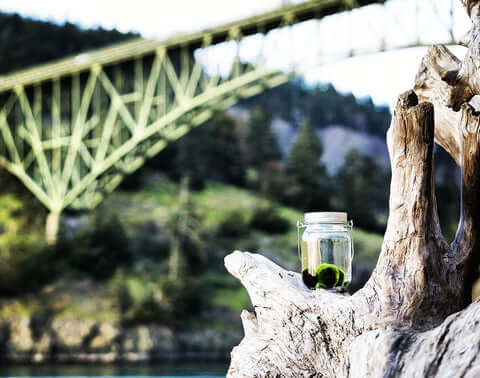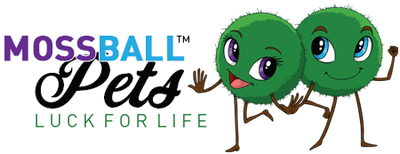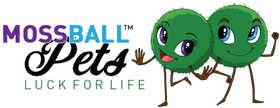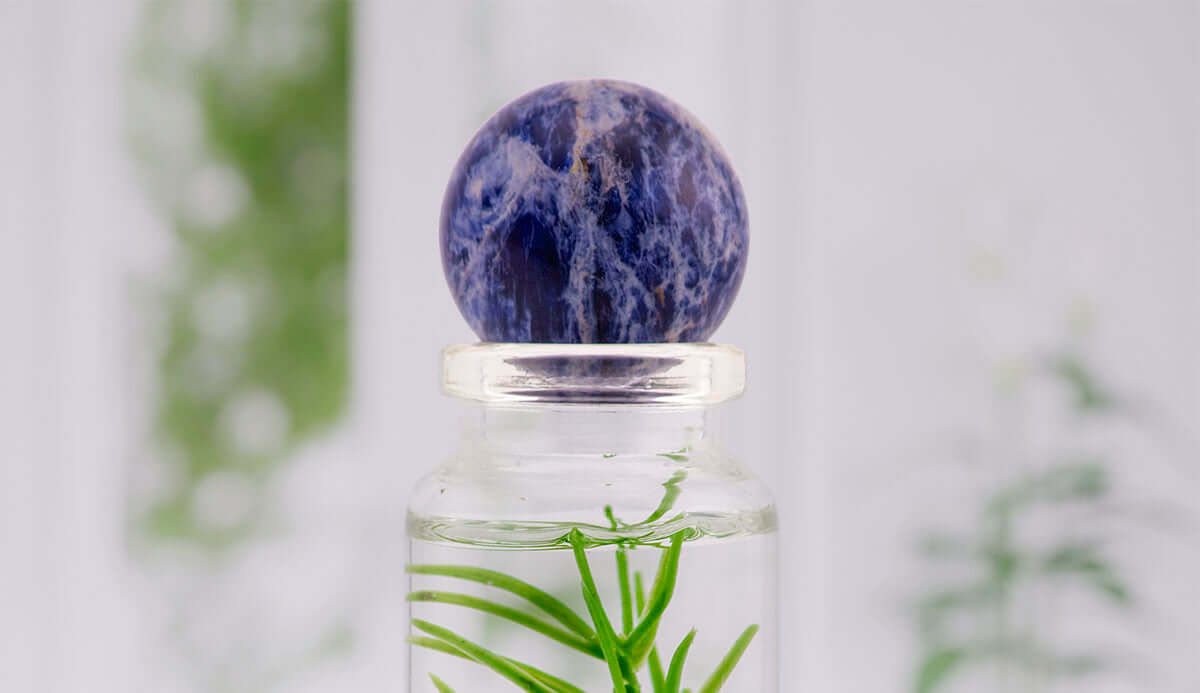The Makings of a Moss Ball Pet

Moss Ball Pets are a form of algae known in the scientific community as Aegagropila linnaei (A.linnaei) . Around the world, they are known by many names such as:
- marimo (Japan)
- kúluskítur (Iceland)
- lake balls
- lake goblins
- cladophora balls
- and (of course) moss balls
However, there was a time when no one knew what they were or what to call them!
The Discovery In Austria
The first recorded discovery of these velvety balls of algae occurred in the 1820s when an Austrian botanist and physician, Anton E. Sauter, took notice of them. He spotted them in Lake Zell (a.k.a. Lake Zeller) which is a small body of water located in Austria.
Although Sauter observed the odd-looking organisms, he did not name them. They did not officially receive a name until the 1840s.
In 1843, Friedrich T. Kützing, a German botanist, phycologist, and pharmacist, indicated that the genus for this organism was Aegagropila.
Fun fact: Aegagropila means “goat hair” in Greek. Understandably, this is the name that Friedrich T. Kützing chose because moss balls can feel like soft clumps of hair.
*Bonus fact* Phycology is the study of algae!
More Discoveries?
Just when the world of phycology thought that this phenomenon could not get any more interesting, there were more stories of discoveries taking place around the globe, in places such as Iceland, Scotland, and Sweden. In 1898, a Japanese botanist, Tatsuhiko Kawakami, discovered A. linnaei in Lake Akan in Hokkaido, Japan.
Tatsuhiko Kawakami is the one we can thank for the Japanese common name, marimo, which roughly translates to “bouncy ball” in English. After his initial discovery, the popularity of marimo increased exponentially, and many people were spending money to attain these little velvety green orbs.
By the 1920s, the people of Japan joined together to preserve their beautiful species of algae and every year since then, Marimo Matsuri has taken place to celebrate nature and all of its beauty with marimo being the primary focus of the festival.
The Life Cycle of Lake Goblins
Currently, there are three ways that scientists have identified the growth of lake goblins.
Isn’t lake goblins a fun name for moss balls?
One growth form exists as free-floating filaments. This means that little clumps of the algae simply float through the water, usually lining the bottom of the body of water where they reside. Think of this form of growth as looking like a plush green carpet at the bottom of a lake.

Another form is when A.linnaei filaments become epilithic (which is just a fun way to say that a plant grows on a rock).
In other instances, it can turn into the marimo that we know and love!
For this transformation to take place, the algae are pushed and pulled by the tides of the body of water. This movement helps keep the lake balls clean and round. Another thing moss balls require is the ability to occasionally access light so that photosynthesis can take place.
What Is At The Center Of A Moss Ball Pet?
(SPOILERS AHEAD!)
Unfortunately, some people do not enjoy the mystery of the moss ball and they want to know, “What is going on inside of this thing?”.

Some think that it is like a pearl, a seed, or something similar to an avocado pit. Despite these assumptions…
There is nothing at the center of the lake balls except their algae.
So, there is no longer a need for you to wonder if there is some sort of rock or filler in the middle of your Moss Ball Pet!
Fun Fact: The world’s largest (and oldest) marimo is said to be 95 centimeters, or 37 inches, in diameter. This means that it is over 200 years old!
Where Do Baby Moss Ball Pets Come From?

This question seems to pop up often!
They usually reproduce through budding:
- This is an asexual form of reproduction that can take place when the moss ball has grown large enough.
Your Moss Ball Pet also will need room to continue growing. You might notice a little bump forming on its rounded surface and that is how you can tell that it is creating another marimo 🟢!
Cladophora Balls Caught Our Attention
After the initial discoveries in places such as Japan, Austria, Iceland, and Scotland, the cladophora ball craze began. Phycologists, botanists, and other scientists were eager to see if bodies of water in their parts of the world contained the mystical and spherical green orbs of algae.
Thanks to their excitement, we now know that cladophora balls can be found in a multitude of other countries such as:
- India
- Britain
- Georgia
- Germany
- the United States of America
- Romania
- Russia
- Cuba
- China
- Australia
- and many other places
BREAKING NEWS: Moss Ball Pets ≠ Moss!
This may be a little surprising (especially if this is your first Moss Ball Pets blog post) but Moss Ball Pets are not moss at all! It is easy to see how people could get algae and moss mixed up. They are both soft, usually green, and damp, right?
While moss and algae have some characteristics in common, they differ because moss is a plant and algae is still perplexing.
- Scientists have just settled on calling algae: an organism that contains chlorophyll (you know, the stuff that makes plants look green).
- Think of moss as being similar to mushrooms: Moss does not produce flowers, instead, they release spores to reproduce.
- Algae also does not produce flowers but can reproduce in a multitude of ways.
Fun fact: Algae is the plural form of alga ( pronounced AL- guh)! Algae can also be pronounced as AL-Gee or AL-ghi!
Moss Ball Pets Today
The Moss Ball Pets that you purchase with us are not the endangered species of algae that we’ve been discussing. These marimo are artificially rolled from free-floating filaments.
This means that small pieces of the algae are taken from the various lakes where marimo can be found and then maintained until it is ready to be sold. I
This way, people can appreciate these beautiful and unique plants without endangering them or their habitats.
Interested in having a piece of the Japanese National Treasure? Visit our shop now to adopt your very own Moss Ball Pet!
Conserving Kúluskítur

Due to their unique aspects and popularity, conservation efforts needed to be instilled shortly after moss balls were discovered.
In Lake Mývatn, Iceland, the moss balls have almost entirely disappeared due to ecological upset. Since there was a lot of fishing and mining, the lake began to produce more nutrients which caused bacteria and other organisms to flourish.
This meant that the lake balls were not able to get enough sunlight and they began to sink beneath the sediment in the lake due to constant mining.
Now, instead of the colonies of moss balls that used to inhabit the lake, the Icelandic people are left with some of the free-floating filaments which can not form into the balls because they still do not have the right conditions.
Conservation tactics have recently been put into place so that this is no longer the situation.
As previously mentioned, Japan went a different route to avoid this tragedy from happening. Marimo was declared a national treasure in the 1920s and since then most people have refrained from removing the marimo that grow in their natural habitat.
Moss Ball Pets are unique living organisms that are rapidly disappearing but through continued conservation and research efforts, they can continue to be admired for many more generations!
If you are interested in learning more about the scientific or cultural details of A. linnaei some useful resources include:
- National Geographic
- Algaebase.org
- Biogeography of A.linnaei: This is a fifteen-page document written by Christian Boedeker, Anja Eggert, Anne Immers, and Isamu Wakana that discusses moss balls and their habitat
Author: Tierra C. Fouse-Watkins
Tierra C. Fouse-Watkins is a Freelance Writer and Front-End Web Developer. She has been the lead writer for Moss Ball Pets since 2017. Tierra is currently a Rivet School Fellow attaining her Bachelor’s degree in Healthcare Management from Southern New Hampshire University. She focuses on using her writing to highlight the unique aspects of authentic products or services so that small businesses can thrive. Follow her on YouTube or LinkedIn.






